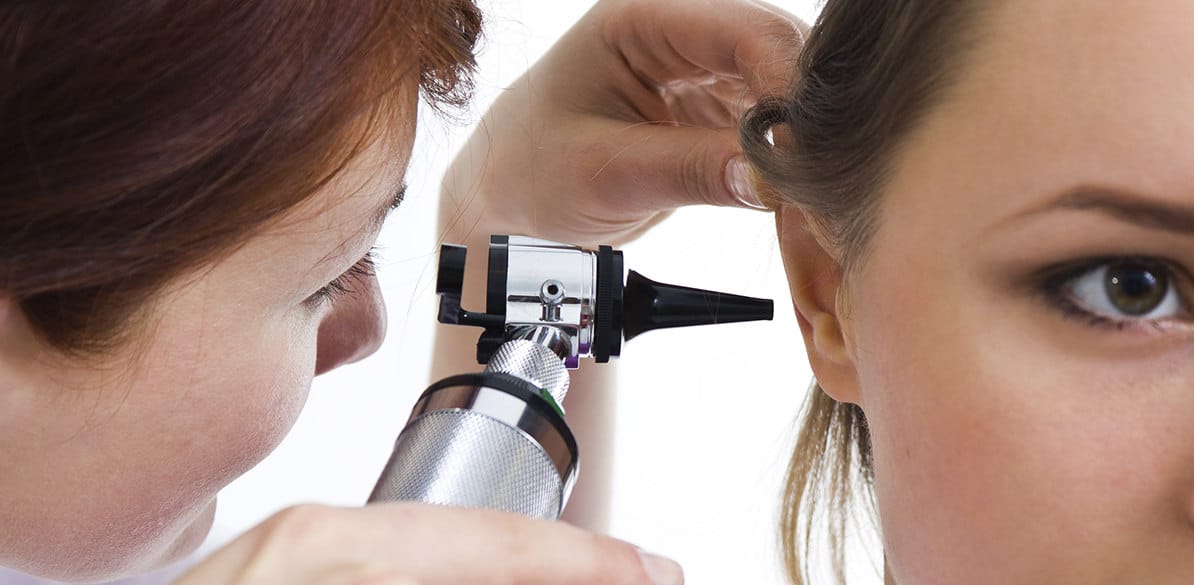Acute hypoacusis, Ménière’s disease, labyrinthosis, ear trauma, otalgia and their interference with driving

Acute hypoacusis
This is a symptom that may be due to diverse causes. The most frequent are peripheral vascular insufficiency, a recent flu or viral infection, and a familial predisposition.
It is a very common clinical condition and should be treated as a genuine medical emergency.
Sudden perception hypoacusis can occur at any time of the day, is nearly always unilateral and may involve total or partial hearing loss.
It is usually accompanied by continuous whistling or ringing in the ear that may be severe or moderate, and rarely by vertigo and instability.
It is frequently associated with psychogenic disorders and other general states of anxiety, depression, stress, distress, etc.
Tips
- The patient should be treated as soon as possible in an emergency department and instructed not to drive there. The physician will inform the patient about this in case the condition recurs on successive occasions.
- The patient should also be instructed that he/she cannot drive until his/her clinical condition has completely resolved. If there are sequelae, the patient’s ability to drive should be evaluated and the patient informed about this.
Ménière’s Disease
It is caused by the excessive pressure accumulation in the endolymphatic fluid.
The alterations in hearing and balance are caused by disruption of the mechanisms that regulate fluid pressure in the labyrinth due to multiple causes that favor this local phenomenon.
Symptoms are caused by attacks that are associated with buzzing, usually high-toned (whistling), perception hypoacusis of variable severity and systemic or peripheral vertigo.
Associated symptoms may be present, such as nausea, vomiting, temporoparietal headaches, a sensations of warmth, sweating, etc.
Tips
- The order of appearance of the symptoms is variable and gives rise to the different clinical forms, but all are incapacitating for driving.
- The possible sequela of hypoacusis occurring after long-term disease requires frequent evaluation of hearing ability to permit driving or renewal of the driver’s license according to the law.
Labyrinthosis
This is a noninflammatory and nontraumatic alteration caused by progressive degeneration of sensory cells in the labyrinth.
It is due to professional or drug-induced intoxication, for example, by aminoglycoside antibiotics, or an endogenous cause, such as hypercholesterolemia, uremia, gout, etc.
It may be hereditary, autoimmune or due to premature aging of the body.
This disease is very often caused by acoustic trauma from excessive noise in the workplace.
The patient may have tinnitus and exceptionally vertigo. Very often, only progressive bilateral perception hypoacusis due to injury to the inner ear is present.
Tips
- Physicians working in companies should monitor and protect persons who work in noisy environments that can cause them to lose hearing, thereby increasing the risk of driving en route to work or home.
- In addition, workers who carry out their work in noisy environments, operating special machinery that generates vibrations and noise of their own in addition to the exterior noise, have a higher risk of causing accidents “on the job”.
- Physicians should fight to achieve noiseless environments in workplaces. If this is not possible, they should protect and isolate vulnerable workers from noise, explaining the reasons and taking actions to achieve this. For example, insisting that truck and bus cabs be soundproofed.
- The patient may have tinnitus and exceptionally vertigo, although very often only progressive bilateral perception hypoacusis due to injury to the inner ear is present. Repeated evaluation of hearing capacity is obligatory to obtain or renew the driver’s license according to the law.
Middle and inner ear trauma
- Acoustic trauma. (previously discussed labyrinthosis).
- Ear injuries due to pressure changes: they may occur in pilots, parachuters, scuba divers, caisson workers and as a result of explosions or contusions.
Symptoms are characterized by vertigo, disequilibrium, acute tinnitus and sudden perception hypoacusis, which may be due in, part to transmission of edema from the inner ear. - Temporal bone fractures: they present with transmission hypoacusis and partial or total perception hypoacusis, facial paralysis, and may also be accompanied by vertigo, nausea and vomiting, etc.
- Labyrinthine concussion: caused by any trauma to the contents of the inner ear cavities, with or without fracture. True labyrinthine concussion is characterized by the occurrence of vertigo of peripheral origin, postural nystagmus and perception hypoacusis.
- In brain concussion with vestibular alterations, disequilibrium is more important than vertigo.
Tips
- Middle and inner ear trauma: no driving is permitted during medical treatment and until complete resolution of the clinical condition.
- Temporal bone fractures: these are incapacitating conditions for driving until their resolution by medical or surgical treatment.
They have important sequelae and require evaluation before driving is permitted. - Labyrinthine concussion: the recovery period is long and the impaired ear should be evaluated at regular intervals to confirm adequate ability to drive.
Otalgia
There is no ear disorder and otalgia is caused by referred pain from injuries to the teeth, pharynx, tongue, larynx or parotid glands. The cause may also be neuralgic pain.
It causes irritation, tiredness and discomfort for driving..
Tips
- The risk of driving should be assessed in these cases and patient informed about this.
